War from the perspective of the man who did the actual fighting
Volker Griesser is the writer of The Lions of Carentan, a book about he Fallschirmjäger-Regiment 6 during the period 1943-1945. We asked the author some questions by e-mail.
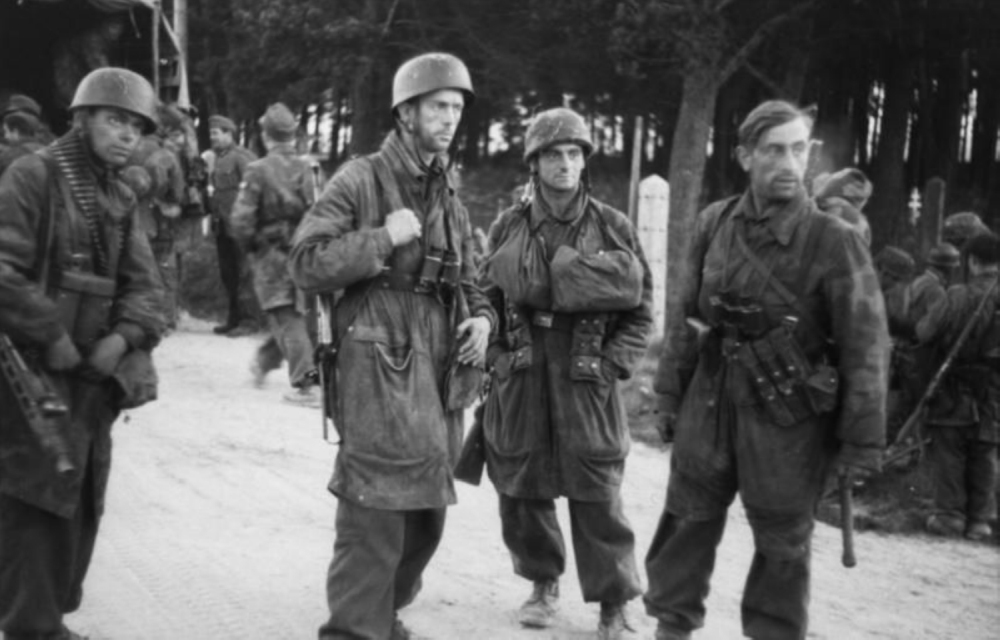
Your book is about the German Fallschirmjäger-Regiment 6. When and why did you decide to write a book about this unit? How long did you work on it?
My grandfather served in the 6th during World War 2. I spent a lot of time with my grandparents when I was a kid and could listen to my grandfather for hours when he was telling stories from “back then”. Since I am from a small town with a rich history and traces from Medieval times all over the place, history fascinated me from an early age on and, of course, the stories from “back then” comprised pretty much everything from the Stone Age to the 1960s, but we came to the point when we were talking about WW2 as well and at a time when the war wasn’t something you’d talk about much during family meetings or elsewhere for that matter, he told me about his wartime service, too.
I decided to start working on the book years after my grandpa had passed away, 2012, to be precise. After reading personal diaries of soldiers from the Napoleonic Wars, the American Civil War and the Vietnam War, it had become clear to me that so much important personal history would be lost if not written down. That’s when I got to work.
The nickname of this regiment was ‘the Lions of Carentan’. Could you explain why they got named like this? Was it feared or respected by its enemies?
The original invasion plan of Operation Overlord expected the city of Carentan to be in Allied hands by noon on 6 June 1944, linking the landing zones Omaha and Utah Beach and securing a beachhead from which to push into France. The 6th had been moved to that area of Normandy after having been refitted and superbly trained by its new Commander von der Heydte in Köln-Wahn. In comparison to the other German units in that particular area, they were top-notch and as paratroopers, they carried with them the knowledge of being an elite unit.
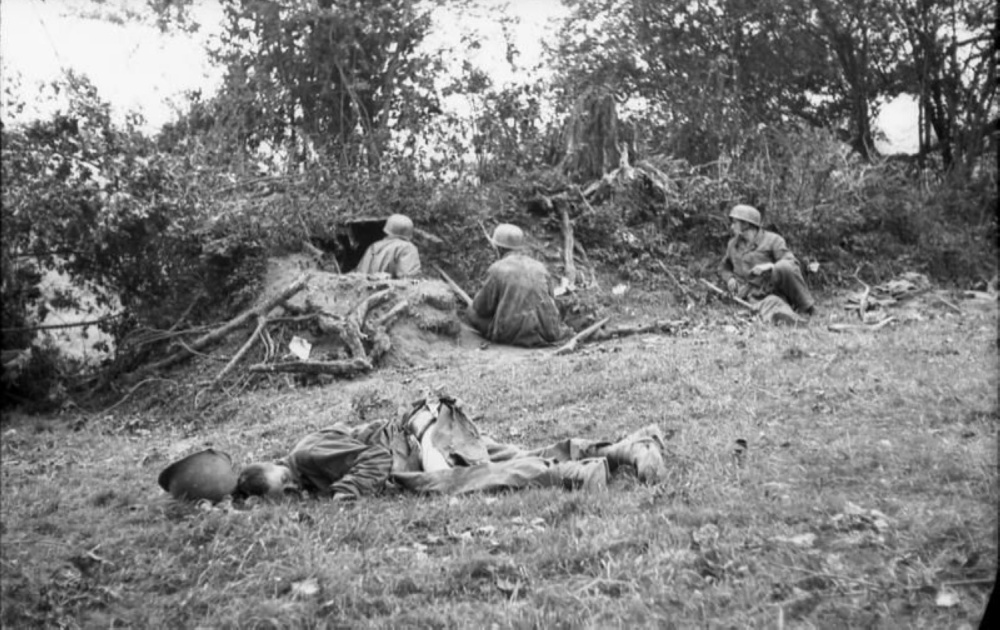
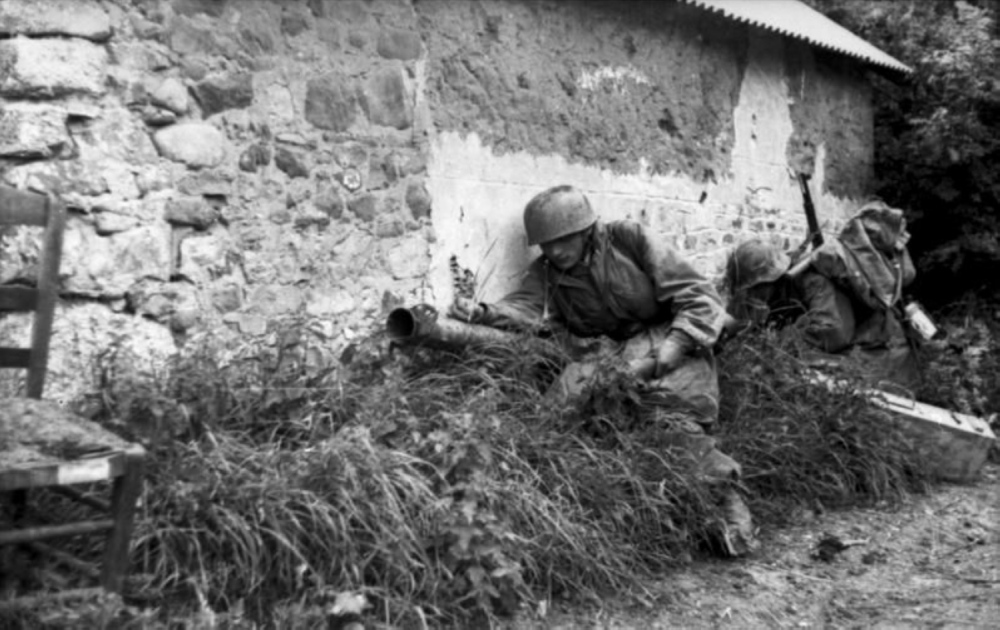
The Allies probably underestimated their will to stand and fight. And so the 6th, along with assorted remnants from other German units they could incorporate, managed to turn Carentan into a real fortress and hold the city against elements of four US Divisions, although they had suffered considerable casualties on the first two days of the invasion. Don’t let the Band of Brothers series betray you, in which it may look like Carentan was taken within a day. In fact the 6th held on until they were almost completely out of ammunition. Every rifleman had to give the majority of his cartridges to the machine gunners. Talk about making every shot count, but during the night of 11 June, they had to start to filter out of the city in order to avoid a complete disaster.
In the early hours of the 12th, the first elements of the 17th SS-Panzergrenadier Division “Götz von Berlichingen” (mechanized infantry) arrived with orders to re-capture Carentan. Without waiting until the rest of their division had come up, the Waffen SS started to attack with FJR6 in support. Initially successful, the assault was checked by the Americans on the 13th and the Germans had to retreat. This effectively ended the battle for Carentan.
After the failed counterattack, the Waffen SS needed a scapegoat, somebody they could hang, so they accused major von der Heydte of cowardice for having retreated from Carentan without having held on to the last man. This was a very tight situation and during what could have turned out to be a court martial on the spot, the German General von Choltitz, Commander of LXXXIV Korps, burst into the room in order to end this charade as he knew von der Heydte’s abilities, stating that the commander of “The Lions of Carentan” was beyond reproach and should be praised for his dogged determination.
Having also talked to American veterans who had fought against the 6th, they had nothing but good things to say about them, so I would think that they earned their respect. There are several examples of fair treatment of POWs and wounded and almost knightly behavior on the battlefield like the truce at the battle of Seves Island (St. Germain sur Sèves) in Normandy.
Besides in Rome and Normandy the regiment was also active in the Netherlands and Belgium. When and where exactly was it deployed and how important was its role?
The 6th had suffered badly during the battle of Normandy and during the retreat through France. In fact, they had started out in May 1944 with over 4000 men and despite having received replacements after the initial losses in the battles around Carentan, were down to maybe 400 men. It’s hard to imagine that a lot of them had not taken off their boots for several weeks, not changing their socks and their underwear. At the hospital, the doctors had to surgically remove the socks from their feet to get them off. The regiment was sent to Germany to be re-organized, re-equipped and brought back up to fighting strength. All that had to be done within six weeks, an impossible task.
With time being critical, training was cut short and they were sent to Tilburg and from there they went straight into action around Geel. Holland and Belgium were important for both the Allies and the Germans: Antwerp as a seaport was needed for the Allies to get supplies to the frontlines and it was important for the Germans to keep that from happening, but also: behind these two countries lay the river Rhine and Germany.
The Allies were knocking at the door to Germany at that point in time and don’t forget that there was an Eastern Front as well. During Operation Market Garden the 6th fought along Hell’s Highway, delaying the Allied relief convoy for as long as possible. After that they were defending through Belgium and Holland wherever the need arose, mainly around Hoogerheide and Woensdrecht, south of Bergen Op Zoom, hurrying back and forth, deploying as much companies as possible to cover as much ground as they could.
As we know, this was a gamble to buy more time and after the battles in Belgium and Holland which were just as important and costly as the Normandy campaign and which sadly are always overshadowed by Market Garden, the 6th was moved into the Eifel, another bad spot on the Western Front.
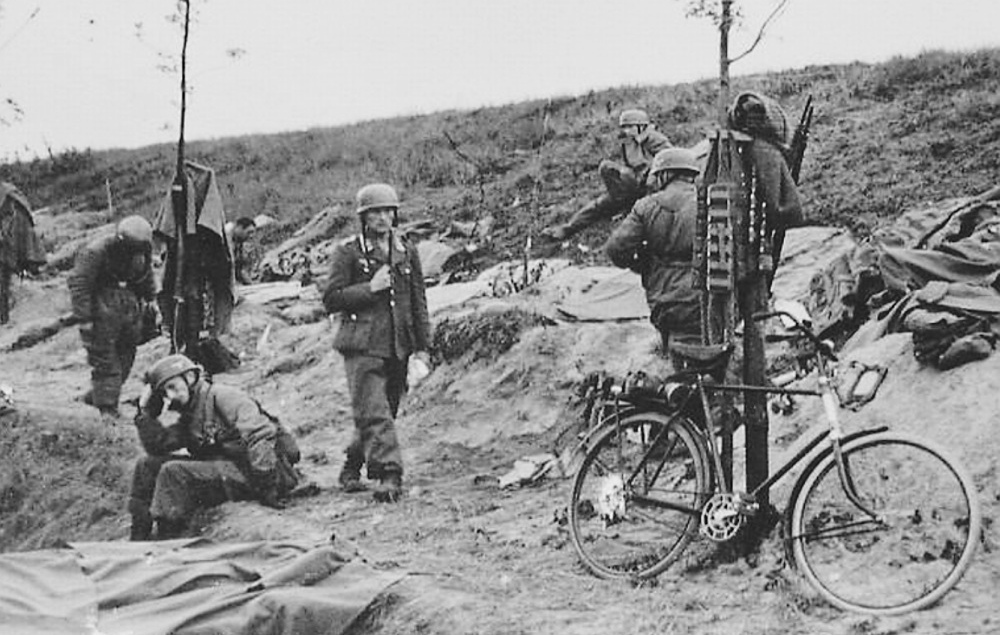
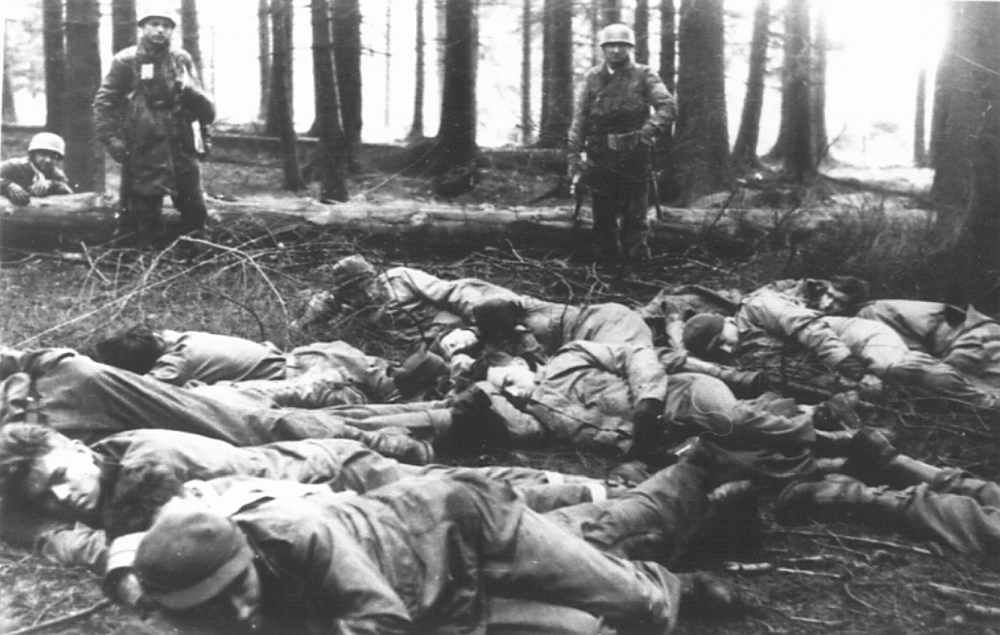
You can pretty much take my book as a battlefield guide if you want and visit the places where the 6th Regiment fought. Take the church at Reusel for example, you can still see the bullet marks on the walls or visit the White House where von der Heydte had the Regimental HQ. That part of WW2 is so much more than Market Garden.
On another weekend, take a trip to the Eifel: climb Castle Hill (German: Burgberg) between Bergstein and Zerkall and see for yourself where the 2nd Rangers tried to drive the 6th off the hill. You can still see where the rifle pits and slit trenches were. Go there in winter with ice and snow on the ground like it was when they fought there. It will get you a different perspective of what it was like.
That’s what I was trying to provide the reader with: the war from the perspective of the man who did the actual fighting. Of course we can analyse what happened from the cosiness of the scientific ivory tower, but for the rifleman it was dirty and lethal.
Before writing this book you spoke with a number of veterans of this unit. How did you get in contact with these men and were they all willing to speak about their war time experiences? Which account or what kind of stories impressed you the most?
As a former Bundeswehr paratrooper, I also was a member of the German Paratroop Association and was granted access to the Federal German Archives which also hosts their Association’s archive of photographs, documents etc.
From them I learned that Alexander Uhlig was the chairman of the FJR6 veterans group and I looked up his phone number, called him, introducing myself and explaining my project. The following Sunday, we had him over for coffee and cake, because he wanted to see what kind of a guy I was and how sincere my interest was. I got invited to their upcoming Regimental Reunion in Berlin where he presented me to the men and more or less ordered them to support this project. I was flooded with names, addresses and phone numbers and got to work.
The veterans of the 6th were a tremendous help. They opened their homes and hearts and, believe it or not, some had not talked about the war outside the circle of their fellow veterans, not even to their children. They provided stories, photographs, maps, diaries… I spent hours sitting down at their kitchen tables listening, taking notes and there were times when they became very emotional when memories they thought they had buttoned up deep inside them came back.
When they came back home after the war nobody wanted to talk about the war. They were not allowed to get what they had experienced out of their system, they were expected to move on. Hard to describe, really, but they were happy that finally somebody showed an interest in them and they opened up readily.
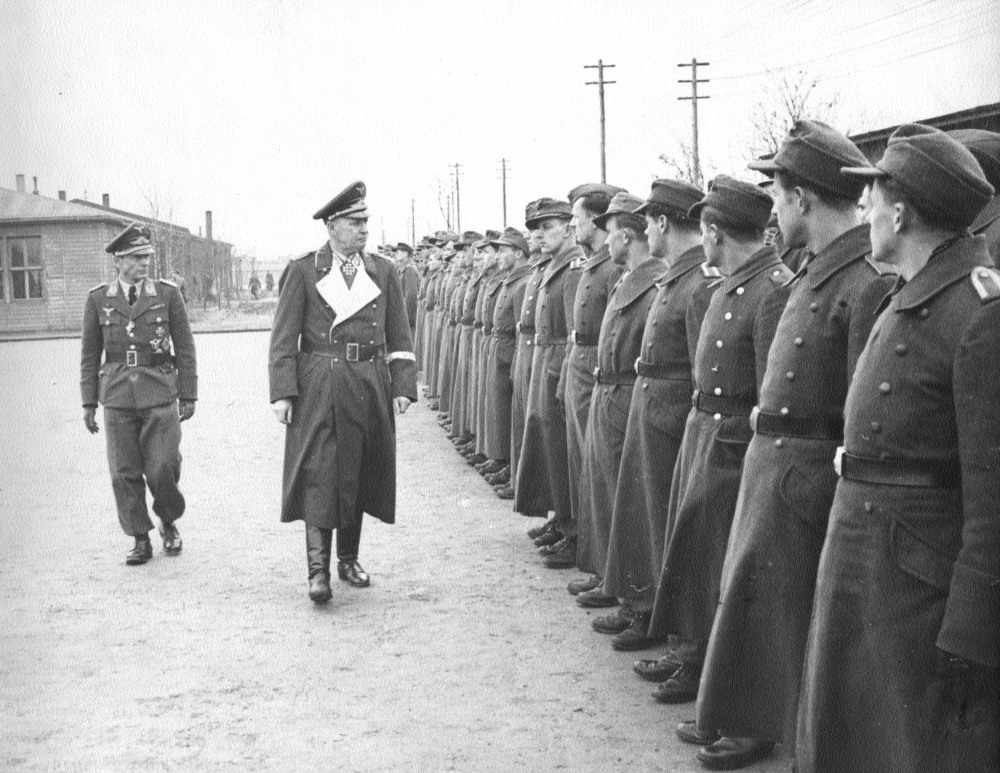
Your book is illustrated with almost 200 photos. Where did you find them and which of them do you find most special?
Most of the photographs came from the veterans, some from American militaria collectors who specialize in the Fallschirmjäger and some from my grandparents.
I would find it hard to single out those that I could call special, because some show the old men who sat me down to listen to their stories as young men. In many of them you can still see pride and a certain dash. It’s the glint in their eyes, the smirk, the jaunty angle they still don their hats. They may be old men now, but inside they still carry the paratrooper spirit. Other photos show men who died during the war or before I started the book and was told about them by the veterans.
From a historical or militaria collecting point of view, there are some photos with rare or unusual items of gear, like the one showing a young Günter Prignitz in Normandy, May 1944, wearing a green jump smock and having a hunting horn by his side. Günter told me that von der Heydte had ordered all the rifle companies in the 6th to have a hornist, because the Fallschirmjäger kept the traditions of the light infantry which traditionally used hunting horns for signalling in the field.
For a long time the green smocks in late-war photos had been supposed to mark the old salt, but more often than not, it simply was the old junk thrown at the young and inexperienced guys while the veterans helped themselves to the new gear when they were resupplied. Just one example of many, though.
Was this unit involved in war crimes and were its members Nazis? Did you speak with the veterans about this subjects or were you more interested in their military experiences?
I kept my book intentionally as free of politics as possible. However, if you take into consideration how young a good deal of these men were when they volunteered for service, they had obviously been properly trained by the party’s youth organizations and indoctrinated to give their all for Führer, Volk and Vaterland. Others have been party members without being “true believers”, out of necessity in civilian life before the war. It became also clear that the realities of war very, very quickly taught them what it was all about and they despised especially the SS for their ruthlessness and the atrocities they committed.
At one occasion, on the way to the front by train, the 6th had some time to kill at a train station and on a parallel track, several railroad cars with camp inmates were waiting to be transported to God knows where. The Fallschirmjäger got curious and walked over there to discover civilians, old, young, male and female, hungry and dirty, imprisoned in the boxcars, begging for food and water. The men unbuttoned their breadbags and gave their rations to those people and a moment later the SS guards showed up, lowering their rifles and ordering the Fallschirmjäger to get back to their own train. At the blink of an eye the men of the 6th pointed their weapons at the SS men while others were still handing out food to the captives. From what I’ve been told, it would have taken a cough or a sneeze and the firefight would have been on. I asked one of the veterans who’s been there if he would have fired at the SS and he stated that he would not have hesitated for a second. “We hated them.” he said.
When the book was almost finished, I found a lead that von der Heydte might actually have been involved in the resistance against Hitler and that the 6th, as being fully prepared to make combat jumps by parachute and feeling like von der Heydte’s personal tribe, might have been the chirurgical instrument to take out the German high command in France, if Von Stauffenberg would have succeeded in the assassination of Hitler. Some clues are in the book, but until I can prove it, I can’t say for sure, of course.
You researched a lot of primary sources, like war diaries and official reports. Was it difficult for you to get all the facts straight?
The Regimental War Diary was lost at the end of the war. It would have been the best source to get all activities into a chronological order as it also listed who was where and when right down to single platoons deployed for missions. Without it, I had to piece everything together by comparing several sources. The next best thing to the War Diary were the notes compiled by Werner Eul who had kept a very meticulous personal diary written in shorthand throughout his service and the lists the veterans association of the 6th had in their own archive. I was fortunate that Alex Uhlig first granted me access to these papers and when the association folded called me to pick them up and keep them safe.
However, it got really difficult when the 6th was mainly being used as a fire brigade and not as a coherent unit by battalion. At times you had companies and platoons scattered all over the area of operations, all under-strength, with no real means of communication to their own HQ.
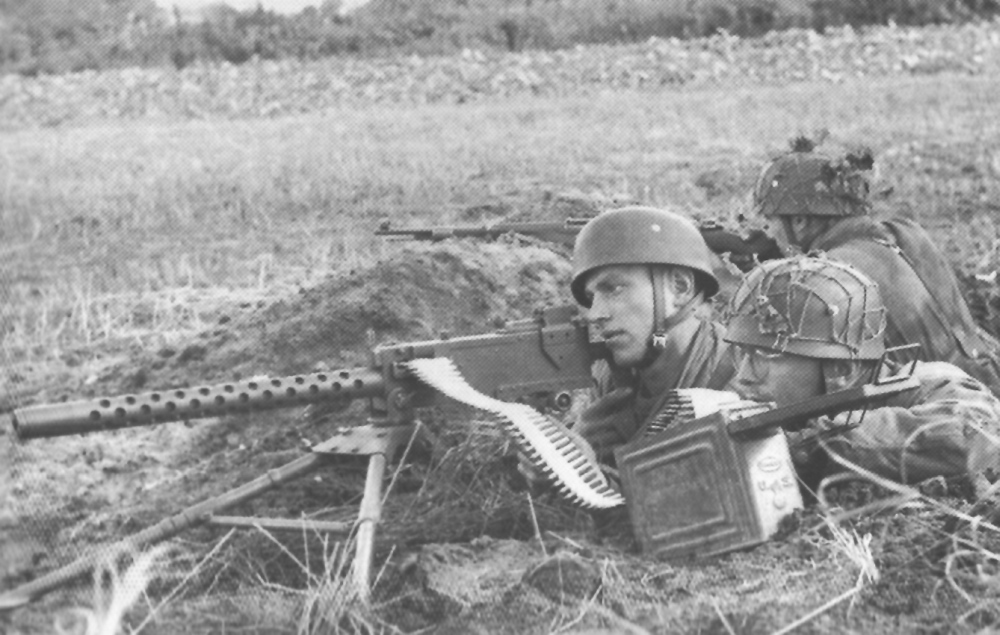
Now you have published this book, do you have plans to start a new research project?
I have never stopped to research military history, there are so many interesting topics to be dealt with and I’m still in touch with what I consider “my” veterans, but also with veterans from other wars. Time flies by and if we don’t try to preserve as much of the personal accounts as we can, their stories will be forgotten and we will have to rely on what historians and others tell us about the “great picture”. Still, it’s always the common man who’s in the thick of it. They are the ones who are easily overlooked. If you know somebody of whom you think has been involved in something you’re interested in, talk to him. Chances are good that nobody has ever shown any interest in him.
Next year we will look at the 50th Anniversary of 1970. Much has happened back then and even more after that. I’m sure you will find something of interest to research and preserve. The future starts tomorrow and yesterday is already history.

Your book is about the German Fallschirmjäger-Regiment 6. When and why did you decide to write a book about this unit? How long did you work on it?
My grandfather served in the 6th during World War 2. I spent a lot of time with my grandparents when I was a kid and could listen to my grandfather for hours when he was telling stories from “back then”. Since I am from a small town with a rich history and traces from Medieval times all over the place, history fascinated me from an early age on and, of course, the stories from “back then” comprised pretty much everything from the Stone Age to the 1960s, but we came to the point when we were talking about WW2 as well and at a time when the war wasn’t something you’d talk about much during family meetings or elsewhere for that matter, he told me about his wartime service, too.
I decided to start working on the book years after my grandpa had passed away, 2012, to be precise. After reading personal diaries of soldiers from the Napoleonic Wars, the American Civil War and the Vietnam War, it had become clear to me that so much important personal history would be lost if not written down. That’s when I got to work.
The nickname of this regiment was ‘the Lions of Carentan’. Could you explain why they got named like this? Was it feared or respected by its enemies?
The original invasion plan of Operation Overlord expected the city of Carentan to be in Allied hands by noon on 6 June 1944, linking the landing zones Omaha and Utah Beach and securing a beachhead from which to push into France. The 6th had been moved to that area of Normandy after having been refitted and superbly trained by its new Commander von der Heydte in Köln-Wahn. In comparison to the other German units in that particular area, they were top-notch and as paratroopers, they carried with them the knowledge of being an elite unit.


The Allies probably underestimated their will to stand and fight. And so the 6th, along with assorted remnants from other German units they could incorporate, managed to turn Carentan into a real fortress and hold the city against elements of four US Divisions, although they had suffered considerable casualties on the first two days of the invasion. Don’t let the Band of Brothers series betray you, in which it may look like Carentan was taken within a day. In fact the 6th held on until they were almost completely out of ammunition. Every rifleman had to give the majority of his cartridges to the machine gunners. Talk about making every shot count, but during the night of 11 June, they had to start to filter out of the city in order to avoid a complete disaster.
In the early hours of the 12th, the first elements of the 17th SS-Panzergrenadier Division “Götz von Berlichingen” (mechanized infantry) arrived with orders to re-capture Carentan. Without waiting until the rest of their division had come up, the Waffen SS started to attack with FJR6 in support. Initially successful, the assault was checked by the Americans on the 13th and the Germans had to retreat. This effectively ended the battle for Carentan.
After the failed counterattack, the Waffen SS needed a scapegoat, somebody they could hang, so they accused major von der Heydte of cowardice for having retreated from Carentan without having held on to the last man. This was a very tight situation and during what could have turned out to be a court martial on the spot, the German General von Choltitz, Commander of LXXXIV Korps, burst into the room in order to end this charade as he knew von der Heydte’s abilities, stating that the commander of “The Lions of Carentan” was beyond reproach and should be praised for his dogged determination.
Having also talked to American veterans who had fought against the 6th, they had nothing but good things to say about them, so I would think that they earned their respect. There are several examples of fair treatment of POWs and wounded and almost knightly behavior on the battlefield like the truce at the battle of Seves Island (St. Germain sur Sèves) in Normandy.
Besides in Rome and Normandy the regiment was also active in the Netherlands and Belgium. When and where exactly was it deployed and how important was its role?
The 6th had suffered badly during the battle of Normandy and during the retreat through France. In fact, they had started out in May 1944 with over 4000 men and despite having received replacements after the initial losses in the battles around Carentan, were down to maybe 400 men. It’s hard to imagine that a lot of them had not taken off their boots for several weeks, not changing their socks and their underwear. At the hospital, the doctors had to surgically remove the socks from their feet to get them off. The regiment was sent to Germany to be re-organized, re-equipped and brought back up to fighting strength. All that had to be done within six weeks, an impossible task.
With time being critical, training was cut short and they were sent to Tilburg and from there they went straight into action around Geel. Holland and Belgium were important for both the Allies and the Germans: Antwerp as a seaport was needed for the Allies to get supplies to the frontlines and it was important for the Germans to keep that from happening, but also: behind these two countries lay the river Rhine and Germany.
The Allies were knocking at the door to Germany at that point in time and don’t forget that there was an Eastern Front as well. During Operation Market Garden the 6th fought along Hell’s Highway, delaying the Allied relief convoy for as long as possible. After that they were defending through Belgium and Holland wherever the need arose, mainly around Hoogerheide and Woensdrecht, south of Bergen Op Zoom, hurrying back and forth, deploying as much companies as possible to cover as much ground as they could.
As we know, this was a gamble to buy more time and after the battles in Belgium and Holland which were just as important and costly as the Normandy campaign and which sadly are always overshadowed by Market Garden, the 6th was moved into the Eifel, another bad spot on the Western Front.


You can pretty much take my book as a battlefield guide if you want and visit the places where the 6th Regiment fought. Take the church at Reusel for example, you can still see the bullet marks on the walls or visit the White House where von der Heydte had the Regimental HQ. That part of WW2 is so much more than Market Garden.
On another weekend, take a trip to the Eifel: climb Castle Hill (German: Burgberg) between Bergstein and Zerkall and see for yourself where the 2nd Rangers tried to drive the 6th off the hill. You can still see where the rifle pits and slit trenches were. Go there in winter with ice and snow on the ground like it was when they fought there. It will get you a different perspective of what it was like.
That’s what I was trying to provide the reader with: the war from the perspective of the man who did the actual fighting. Of course we can analyse what happened from the cosiness of the scientific ivory tower, but for the rifleman it was dirty and lethal.
Before writing this book you spoke with a number of veterans of this unit. How did you get in contact with these men and were they all willing to speak about their war time experiences? Which account or what kind of stories impressed you the most?
As a former Bundeswehr paratrooper, I also was a member of the German Paratroop Association and was granted access to the Federal German Archives which also hosts their Association’s archive of photographs, documents etc.
From them I learned that Alexander Uhlig was the chairman of the FJR6 veterans group and I looked up his phone number, called him, introducing myself and explaining my project. The following Sunday, we had him over for coffee and cake, because he wanted to see what kind of a guy I was and how sincere my interest was. I got invited to their upcoming Regimental Reunion in Berlin where he presented me to the men and more or less ordered them to support this project. I was flooded with names, addresses and phone numbers and got to work.
The veterans of the 6th were a tremendous help. They opened their homes and hearts and, believe it or not, some had not talked about the war outside the circle of their fellow veterans, not even to their children. They provided stories, photographs, maps, diaries… I spent hours sitting down at their kitchen tables listening, taking notes and there were times when they became very emotional when memories they thought they had buttoned up deep inside them came back.
When they came back home after the war nobody wanted to talk about the war. They were not allowed to get what they had experienced out of their system, they were expected to move on. Hard to describe, really, but they were happy that finally somebody showed an interest in them and they opened up readily.

Your book is illustrated with almost 200 photos. Where did you find them and which of them do you find most special?
Most of the photographs came from the veterans, some from American militaria collectors who specialize in the Fallschirmjäger and some from my grandparents.
I would find it hard to single out those that I could call special, because some show the old men who sat me down to listen to their stories as young men. In many of them you can still see pride and a certain dash. It’s the glint in their eyes, the smirk, the jaunty angle they still don their hats. They may be old men now, but inside they still carry the paratrooper spirit. Other photos show men who died during the war or before I started the book and was told about them by the veterans.
From a historical or militaria collecting point of view, there are some photos with rare or unusual items of gear, like the one showing a young Günter Prignitz in Normandy, May 1944, wearing a green jump smock and having a hunting horn by his side. Günter told me that von der Heydte had ordered all the rifle companies in the 6th to have a hornist, because the Fallschirmjäger kept the traditions of the light infantry which traditionally used hunting horns for signalling in the field.
For a long time the green smocks in late-war photos had been supposed to mark the old salt, but more often than not, it simply was the old junk thrown at the young and inexperienced guys while the veterans helped themselves to the new gear when they were resupplied. Just one example of many, though.
Was this unit involved in war crimes and were its members Nazis? Did you speak with the veterans about this subjects or were you more interested in their military experiences?
I kept my book intentionally as free of politics as possible. However, if you take into consideration how young a good deal of these men were when they volunteered for service, they had obviously been properly trained by the party’s youth organizations and indoctrinated to give their all for Führer, Volk and Vaterland. Others have been party members without being “true believers”, out of necessity in civilian life before the war. It became also clear that the realities of war very, very quickly taught them what it was all about and they despised especially the SS for their ruthlessness and the atrocities they committed.
At one occasion, on the way to the front by train, the 6th had some time to kill at a train station and on a parallel track, several railroad cars with camp inmates were waiting to be transported to God knows where. The Fallschirmjäger got curious and walked over there to discover civilians, old, young, male and female, hungry and dirty, imprisoned in the boxcars, begging for food and water. The men unbuttoned their breadbags and gave their rations to those people and a moment later the SS guards showed up, lowering their rifles and ordering the Fallschirmjäger to get back to their own train. At the blink of an eye the men of the 6th pointed their weapons at the SS men while others were still handing out food to the captives. From what I’ve been told, it would have taken a cough or a sneeze and the firefight would have been on. I asked one of the veterans who’s been there if he would have fired at the SS and he stated that he would not have hesitated for a second. “We hated them.” he said.
When the book was almost finished, I found a lead that von der Heydte might actually have been involved in the resistance against Hitler and that the 6th, as being fully prepared to make combat jumps by parachute and feeling like von der Heydte’s personal tribe, might have been the chirurgical instrument to take out the German high command in France, if Von Stauffenberg would have succeeded in the assassination of Hitler. Some clues are in the book, but until I can prove it, I can’t say for sure, of course.
You researched a lot of primary sources, like war diaries and official reports. Was it difficult for you to get all the facts straight?
The Regimental War Diary was lost at the end of the war. It would have been the best source to get all activities into a chronological order as it also listed who was where and when right down to single platoons deployed for missions. Without it, I had to piece everything together by comparing several sources. The next best thing to the War Diary were the notes compiled by Werner Eul who had kept a very meticulous personal diary written in shorthand throughout his service and the lists the veterans association of the 6th had in their own archive. I was fortunate that Alex Uhlig first granted me access to these papers and when the association folded called me to pick them up and keep them safe.
However, it got really difficult when the 6th was mainly being used as a fire brigade and not as a coherent unit by battalion. At times you had companies and platoons scattered all over the area of operations, all under-strength, with no real means of communication to their own HQ.

Now you have published this book, do you have plans to start a new research project?
I have never stopped to research military history, there are so many interesting topics to be dealt with and I’m still in touch with what I consider “my” veterans, but also with veterans from other wars. Time flies by and if we don’t try to preserve as much of the personal accounts as we can, their stories will be forgotten and we will have to rely on what historians and others tell us about the “great picture”. Still, it’s always the common man who’s in the thick of it. They are the ones who are easily overlooked. If you know somebody of whom you think has been involved in something you’re interested in, talk to him. Chances are good that nobody has ever shown any interest in him.
Next year we will look at the 50th Anniversary of 1970. Much has happened back then and even more after that. I’m sure you will find something of interest to research and preserve. The future starts tomorrow and yesterday is already history.
- The Lions of Carentan
- Fallschirmjager Regiment 6, 1943-1945
- ISBN: 9781612000060
- More information about this book

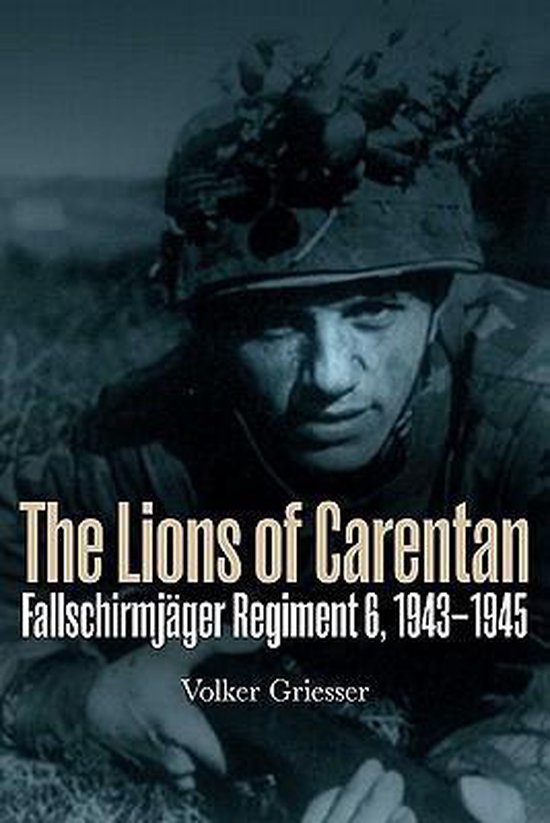
Used source(s)
- Source: TracesOfWar / Volker Griesser
- Published on: 23-11-2019 18:53:29
Related news
- 11-'24: Postal artifacts provide a vibrant testament to the experiences of the Dutch people during WWII
- 10-'24: DigitalBattlefieldTours unlocks military tactics to a wide audience
- 08-'24: Researching his father’s WWII history became a passion for Steve Snyder
- 08-'24: Who was the owner of the photo album from Dachau?
- 07-'24: The British people welcomed African American servicemen with open arms
Latest news
- 03-03: A WWII helmet returns home 80 years after having been lost at Remagen Bridge, Germany
- 16-02: Armin T. Wegner and his letter to Hitler
- 14-02: The hugely popular ‘Standing with Giants’ installation returns to the British Normandy Memorial
- 27-01: Russia focuses on Soviet victims of WW2 as officials not invited to Auschwitz ceremony
- 27-01: Oswald Kaduk, ‘Papa Kaduk’ or a monster??
- 12-'24: Christmas and New Year message from our volunteers
- 11-'24: New book: Righteous Behind Barbed Wire
- 11-'24: Postal artifacts provide a vibrant testament to the experiences of the Dutch people during WWII
- 10-'24: DigitalBattlefieldTours unlocks military tactics to a wide audience
- 10-'24: Lily Ebert, Holocaust Survivor, Author and TikTok Star, Dies at 100

